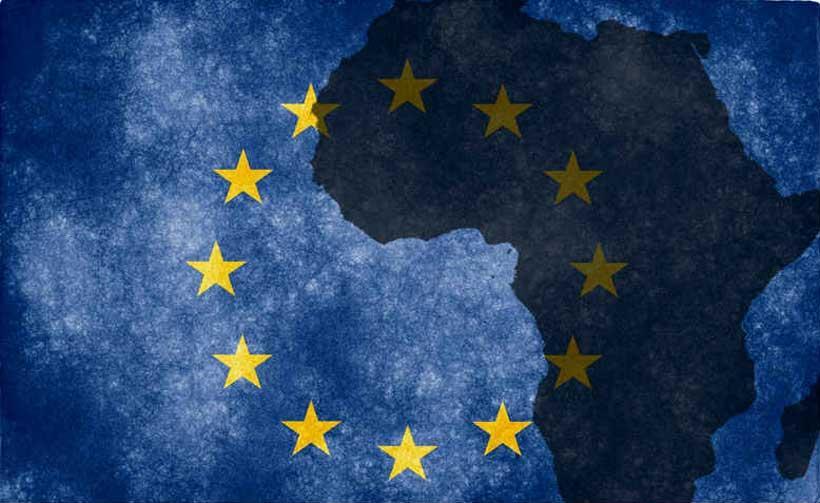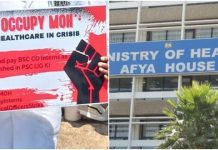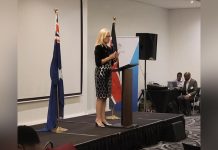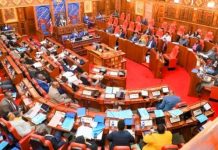By Andrew Dunne
Africa-Press – Kenya. From her offices in Cape Town, South Africa, Zandile Ntuli is on a mission to foster stronger links between innovators and investors across Europe and Africa.
Three years ago, the former corporate executive pivoted careers to focus on start-ups. Today, she draws on her corporate skills to enable small businesses from both continents to thrive.
‘We see a huge opportunity for growth by improving the connections and investment between the business communities in Africa and Europe,’ she said.
Crossing continents
Ntuli manages the ENRICH in Africa (EiA) Centre, a spin-off and legacy of an EU-funded project of the same name which ran from 2021 to mid-2024.
The EiA Centre provides a bridge across continents for entrepreneurs, start-ups and SMEs, connecting them with business incubators and accelerators. Its network of 80 partners spans all EU and African countries.
Via its website, businesses register interest and identify their needs – whether that’s access to new markets, funding or business support. Fledgling companies pitch ideas to investors and are matched with more established business “champions”.
Safetrade101, a French financial services platform focused on supporting African SMEs, is one organisation that benefited from this initiative. Through one of EiA’s networking events, it extended its operations to South Africa and subsequently to Cameroon.
Other collaborations are emerging, and the team expect success to be seen both ways with European companies investing in Africa, and African firms also expanding into Europe.
An untapped potential
Sandrine Doretto co-ordinated the original EiA project based at Steinbeis Europa Zentrum, Germany. She sees a huge untapped potential that could be accessed through enabling business collaboration in this way.
With a population predicted to grow from over 1.4 billion today to 4.2 billion by 2100, Africa is one of the fastest growing markets and will eventually become one of the biggest.
Doretto sees EiA’s work within the context of the wider African Union (AU)-EU Innovation Agenda, which recognises partnership as critical to achieving the objectives of both Europe and Africa. The AU-EU Innovation Agenda, adopted in July 2023, aims to ensure that support to innovation and research translates into tangible benefits for people in the form of real products, services, businesses and jobs.
‘The idea of the project, and wider AU-EU Innovation Agenda, is to show Africa that Europe is here and wants to work with them,’ she said.
Doretto and Ntuli say Europe can draw inspiration from Africa, and vice versa.
‘It’s hard to do business here and Europe can learn from Africa how to be resilient,’ said Ntuli.
For Ntuli, however, her real motivation comes from wanting to do more to grow new businesses that then go on to provide jobs where they are greatly needed.
‘Africa needs solutions. Anything that adds growth to help make businesses profitable so that they can provide jobs. It’s the only way we can raise our countries out of poverty,’ she said.
Making innovation possible
Dr Barbara Kieslinger is another researcher hoping to encourage greater European-African partnership. As a senior scientist at the Centre for Social Innovation in Vienna, Austria, she is interested in the social transformation potential of grassroots “makerspaces”.
Makerspaces are large, community-based open-plan offices accessible to local people. They typically provide a range of facilities that allow innovators to explore their ideas further, including expensive digital production tools such as 3D printers or laser cutters.
Kieslinger describes them as modern-day workshops. A wide array of products can and have been developed in these spaces, including anything from medical devices through to space equipment, car parts and computer accessories.
Kieslinger coordinates the African European Maker Innovation Ecosystem (mAkE) initiative which kicked off in early 2022 and runs until January next year. mAkE received funding from the EU to expand makerspaces in both Europe and Africa.
‘There’s a very strong economic potential as local start-ups often begin in these makerspaces,’ said Kieslinger. ‘But we also want to move away from a globalised, mass manufacturing model towards a decentralised one so we don’t have to always fly everything across the globe.’
Growing awareness of the value of local production has been brought about by the pandemic and challenges in the global supply chain. Kieslinger also believes that the EU’s right-to-repair directive, adopted in May this year, will mean makerspaces become more important in the years ahead.
The new rules aim to strengthen the EU repair market, to lower repair costs and reduce waste, with manufacturers required to provide access to spare parts, tools and repair information.
Growing makerspaces
Makerspaces in both Europe and Africa have proliferated in recent years. Happylab Wien, the largest makerspace in Vienna, offers open access to precision tools and is one example in Europe. MoTIV, an enormous warehouse in Kampala, Uganda, with 80 sewing machines and 50 3D printers is another in Africa.
With 10 official partners (six in Europe and four in Africa) and a membership of over 300, the mAkE team have brought together a network of such makerspaces to share learning, improve business practices and build the capacity to do more in the future.
This has included creating an online map of machinery charting nearly 10 000 makerspaces in Europe and Africa, highlighting where these are and what tools are available in each one. This will make it easier for more people to find and use them.
It has also involved creating a catalogue of business models to help new entrepreneurs to professionalise their operations and business mentoring services. A series of specialised train-the-trainer events has helped community leaders to establish new makerspaces.
Leonard Shayo, a systems engineer from Olspace – Tanzania’s first commercial aerospace and space exploration company – is one beneficiary of the work. Through mAkE, he became a Maker in Residence at mAkE’s European partner FabLab-Barcelona working on designs for a new CubeSat satellite.
‘It’s been incredible to meet and collaborate with amazing scientists who share my passion for innovation. I was able to introduce our satellite project, as well as Olspace’s mission toward advancing Tanzania’s space exploration sector,’ he said.
Kieslinger said that how makerspaces operate in Europe and Africa can differ, but there are opportunities to learn from each other. Whilst European makerspaces can teach African counterparts about regulations and operations, Europe can look to Africa for innovative ideas.
‘We can learn a lot from our African partners – they are using these spaces, these hubs, to support young entrepreneurs, and in many ways are actually much more active,’ she said.
Newsroom
For More News And Analysis About Kenya Follow Africa-Press






